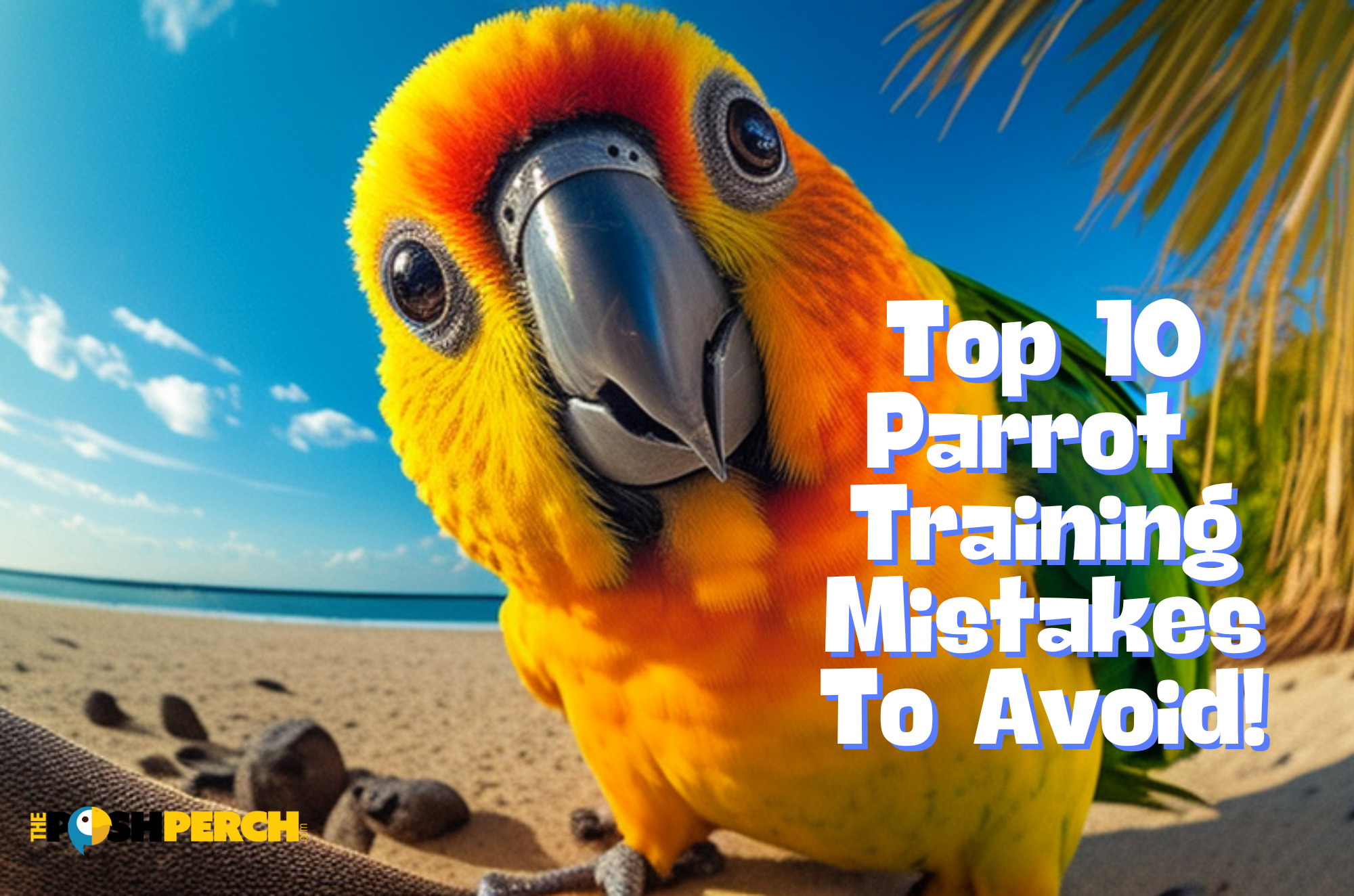
Exploring the Vibrant World of Green Cheek Conure Mutations
8 min reading time

8 min reading time
Green Cheek Conures have captured the hearts of bird enthusiasts worldwide, and it's not hard to see why. These charming little parrots are known for their playful nature, affordability, and compact size, making them a popular choice among bird owners. Let's dive into what makes Green Cheek Conures so beloved, explore their various mutations, discover their origins, and learn how to care for these delightful birds.
Green Cheek Conures are adored for several reasons. Firstly, their small size makes them ideal for apartment living, allowing bird lovers to enjoy their company without needing a large space. They're also relatively inexpensive compared to other parrot species, making them accessible to a wider range of bird enthusiasts.
Their playful and affectionate personalities are perhaps their most endearing trait. Green Cheek Conures are known to be social, engaging in playful antics that entertain their owners. They form strong bonds with their human companions, often seeking cuddles and attention. Their ability to mimic sounds and learn tricks adds another layer of charm, making them delightful companions for those willing to invest time in training.
Native to South America, Green Cheek Conures are found in the forests of Brazil, Bolivia, Argentina, and Paraguay. These birds thrive in tropical environments, and their natural habitat is marked by lush greenery and a warm climate. They are part of the Pyrrhura genus, which includes several small to medium-sized parrots known for their vibrant plumage and lively personalities.
The journey of Green Cheek Conure mutations began as breeders sought to enhance and diversify their already vibrant plumage. Over time, selective breeding has led to an array of stunning color mutations, each with its unique charm. These mutations have expanded the appeal of Green Cheek Conures, offering bird enthusiasts a wide variety of colors and patterns to choose from.
Pineapple Conure: This mutation combines the Yellow Sided and Cinnamon Conure traits, resulting in a bird with a warm, pineapple-like coloration. Their vibrant yellow and red feathers make them a visual delight. Pineapple Conures are known for their gentle and affectionate nature, making them excellent pets for families.
Yellow Sided Conure: Known for their striking yellow and orange hues on the sides, these conures are a popular choice for those seeking a bright and cheerful companion. Their lively personalities and ability to form strong bonds with their owners make them a favorite among conure enthusiasts.
Cinnamon Conure: With a lighter, cinnamon-colored plumage, these birds have a softer appearance compared to their standard green counterparts. Cinnamon Conures are often praised for their calm demeanor, making them suitable for first-time bird owners.
Pineapple Cinnamon Conure: A beautiful blend of the Pineapple and Cinnamon mutations, these conures display a unique mix of warm tones. They are known for their playful and curious nature, often exploring their surroundings with enthusiasm.
Turquoise Conure: This mutation features a stunning blue-green color, reminiscent of tropical waters, making them a standout among conures. Turquoise Conures are highly intelligent and enjoy mental stimulation, thriving in environments where they can engage with toys and puzzles.
Turquoise Yellow Sided Conure: Combining the Turquoise and Yellow Sided traits, these birds boast a breathtaking palette of blues and yellows. Their vibrant appearance is matched by their lively and social personalities, making them a joy to interact with.
Mint Conure: A relatively new mutation, the Mint Conure showcases a soft, minty green hue, adding a fresh twist to the Green Cheek family. These conures are known for their inquisitive nature and love of play, often engaging in playful antics that entertain their owners.
High Red Conure: As the name suggests, these conures have an intense red coloration, making them a striking presence. High Red Conures are energetic and require plenty of exercise and social interaction to keep them happy and healthy.
Sun Cheek Conure: With a brilliant sun-like glow, these conures are a burst of energy and color. Sun Cheek Conures are known for their cheerful disposition and love of attention, often seeking interaction with their human companions.
Moon Cheek Conure: The Moon Cheek mutation offers a more subdued, moonlit appearance with softer shades. These conures are gentle and affectionate, often forming strong bonds with their owners and enjoying quiet time together.
Crimson Bellied Conure: Known for their deep crimson chests, these conures are a vibrant and eye-catching variety. Crimson Bellied Conures are social and enjoy being part of family activities, often seeking attention and interaction.
Maroon Bellied Conure: With a rich maroon belly, these birds add a touch of elegance to the conure family. Maroon Bellied Conures are known for their calm and gentle nature, making them suitable for households with children.
Blue-Throated Conure: This mutation features a distinctive blue throat, adding a unique twist to their appearance. Blue-Throated Conures are intelligent and enjoy learning new tricks, often thriving in environments where they can engage with their surroundings.
Green Cheek Conures are relatively easy to care for, but they do require attention to ensure they thrive in a home environment.
Cage Size: A spacious cage is essential for these active birds. Ideally, a cage should be at least 24 inches long, 24 inches wide, and 30 inches tall, with bar spacing of 1/2 inch to prevent escape and injury. Providing ample space for them to move, play, and stretch their wings is crucial. Additionally, the cage should be equipped with perches, toys, and climbing structures to keep them entertained and physically active.
Diet: A balanced diet is key to their health. Green Cheek Conures should be fed a mix of high-quality pellets, fresh fruits, and vegetables. Foods like apples, carrots, spinach, and sweet potatoes are excellent choices. Additionally, seeds can be offered in moderation as a treat, but they shouldn't be the primary diet component. Fresh water should always be available, and it's important to clean food and water dishes regularly to prevent bacterial growth.
Social Interaction: These social birds thrive on interaction and stimulation. Regular playtime outside the cage, toys, and socialization with their human companions are essential to their well-being. Providing a variety of toys, such as puzzles, bells, and chewable items, can help keep them mentally stimulated and prevent boredom.
Health and Veterinary Care: Regular veterinary check-ups are important to ensure the health of your Green Cheek Conure. Be on the lookout for signs of illness, such as changes in appetite, behavior, or droppings, and consult a vet if you notice anything unusual. Keeping their environment clean and providing a balanced diet will also contribute to their overall health.
The process of creating these mutations began several decades ago as breeders aimed to enhance the natural beauty of Green Cheek Conures. Through careful selection and breeding, they have developed a wide range of color variations that continue to captivate bird lovers. The dedication of breeders to maintaining the health and vitality of these birds while exploring new color possibilities has resulted in the vibrant array of mutations we see today.
Green Cheek Conures, with their delightful personalities and stunning mutations, offer a unique and colorful addition to any bird lover's home. Their journey from their native habitats to becoming a beloved pet with diverse mutations is a testament to their enduring appeal. Whether you're drawn to the vibrant Pineapple Conure or the serene Moon Cheek Conure, there's a Green Cheek Conure mutation to suit every taste.
Owning a Green Cheek Conure is a rewarding experience, filled with companionship, laughter, and the joy of watching these intelligent birds thrive. By providing them with the right care, environment, and attention, you can ensure a happy and healthy life for your feathery friend. Let's take a closer look at what makes Green Cheek Conures so special and how you can give them the best life possible.


